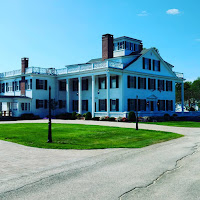This week’s Practical Ed Tech Tip of the Week Newsletter featured ten Google search tips for students. It’s all well and good to give those tips to students and show them how to use them, but for the tips to really sink in students should get some practice using them. To that end, you can use some the free lesson plans available through Google’s Search Education page. But I’ve always been a bit of a DIYer so I like to create my own search challenges. Here’s an overview of the process that I use.
The process that I use is heavily influenced by following the work of Dan Russell. His title is Senior Research Scientist for Search Quality and User Happiness at Google. What that means for you, for me, and for students is that he spends a lot of time studying how people search and using that information to help people conduct better searches. His blog Search ReSearch offers lots of explanations of detailed search methods. Many of his examples include images and mine do too.
Here’s the process that I use to create my own image-based search challenges for students.
- Select an interesting picture that you can build a little story around. Incorporate into that story some clues that students can use to answer the questions that you will ask students to answer about the image.
- Create a few questions based on the image. I like to arrange the questions in an order such that the correct answer to the first one provides clues toward answering the subsequent questions.
- Take a test run of answering your own questions to detect any possible confusion or pain points for students.
Here’s a sample image-based search challenge that I developed and frequently use.
- The story: The picture in this blog post is one that I took while walking through a historic neighborhood in Maine. I was told that the house was once owned by a Vice President of the United States but I couldn’t find any signs around the house that confirmed that rumor. With the use of a couple of Google search tools I was able to confirm that it was, in fact, owned by a former Vice President. Furthermore, it’s now the site of a historical collection that contains the last Duesenberg produced.
- Questions:
- Which former Vice President owned this house?
- What is the address of the house?
- Will the sunset be on the front or back of the house?
- What Google tools did you use to find that answer?
- Who owns the last Duesenberg?
Here’s the outline of the possible steps students might take to get the answers to the search challenge questions.
- Find a list of all former Vice Presidents of the United States. (Wikipedia provides an accurate list). Work through the list to find the Vice Presidents who either resided in Maine and or owned property in Maine.
- Alternatively, conduct a search along the lines of “vice presidents owning property in Maine.”
- Through both methods students may come up with answers that include George H.W. Bush, George W. Bush, Hannibal Hamlin, and Nelson Rockefeller.
- After creating the list of possible owners of the home, students turn to Google Images to search for pictures of the properties of respective VPs.
- Another method that students can use to get to the answer to the first question is to take a copy of the picture presented to them and upload it to Google Images. This will create a list of possible matches for the original picture. (Note, by the time you read this students might come across one of my blog posts describing this search challenge).
- Through one of the methods outlined above students should determine that the house was owned by Hannibal Hamlin. It is at this point that some students will mistakenly think that the home in Bangor, Maine when it is actually in Paris, Maine (sometimes listed as South Paris or Paris Hill). From here students can turn to Google Maps or Google Earth to find the address for the home. The use of Google Maps or Google Earth will let students see the orientation of the house to determine if the sun will set on the front or back of the house.
- Now that students know where the house is (Paris, Maine) and who owned it (Hannibal Hamlin) students can add Duesenberg to a search for Paris Maine or Hannibal Hamlin House in a manner like this “Paris Maine Duesenberg.” Those search results will lead to many articles are about the car collection of Bob Bahre, the current owner of the home and car collection.
